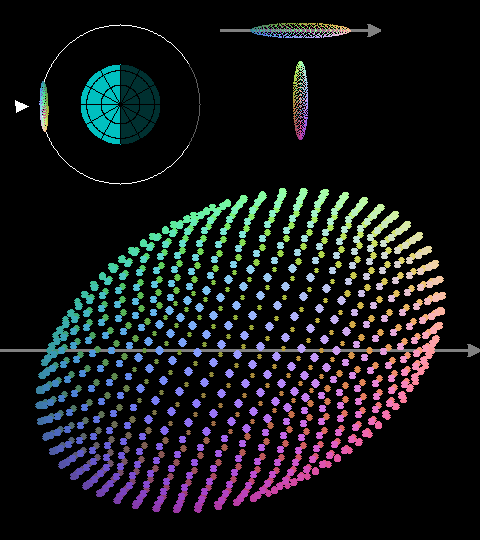IEEE Sustainable Technologies Conference August 2013
the submitted paper
Rotating Geodesic Array
 |
This shows an array of 1002 thinsats arranged in a radially-flattened icosahedral geodesic sphere, with V=10 or 9 thinsats between vertices. The array appears to rotate because each thinsat is in a slightly inclined and elliptical orbit, toroidally wrapped around a central "m288" circular equatorial orbit. This array is 20 meters across. The size of the array in the orbiting top view is greatly exaggerated, with the Sun to the left, looking from the north pole.
The array makes 6 orbits per solar day, while the earth turns once per solar day, appearing as 5 overhead passes from the ground.
At 5 grams per thinsat, this array weighs 5 kg, and with a 70GHz carrier has a half-power ground spot size 1km across at 30°N (7200km distance).
The array is sparse, and most of the power is splattered over a 3 degree wide beam (diffraction limit from the 20cm wide thinsat), but with a 1m2 ground antenna and a 1Gbps signal only a picowatt/m2 signal strength is needed at the primary ground spot, with far lower sidelobe power - less than 1 part in 1 billion of maximum radio energy health limits.
source file, requires apngasm and libgd, produced with Scientific Linux. |
IEEESustech2013 (last edited 2021-05-20 05:44:36 by KeithLofstrom)

